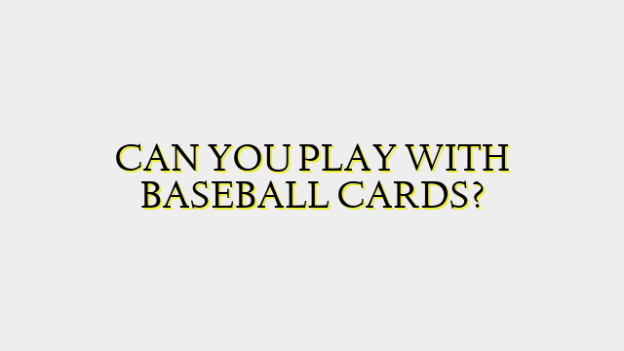There are many fun ways to play with baseball cards beyond just collecting them. Baseball cards offer a unique opportunity for creative play that can spark children’s imagination. Whether playing alone or with friends, here are some enjoyable activities kids can do with their baseball card collections:
Fantasy Baseball
One of the most popular ways to play with baseball cards is to create a fantasy baseball team. Players can assign each card a certain salary based on the player’s real-life stats and ability. They then use an imaginary budget to “draft” players and build their fantasy roster. Throughout the baseball season, the fantasy team’s performance is tracked based on how those players actually do in real MLB games. Points are awarded for different stats like home runs, RBIs, wins, saves and more. At the end of the fantasy “season”, the team with the most total points wins. This allows kids to feel like real general managers assembling their dream roster.
Baseball Card Games
There are numerous traditional card games that can be played using baseball cards instead of traditional playing cards. Two examples are Go-Fish and War. For Go-Fish, kids ask each other if they have certain players on their team by saying something like “Do you have Michael Conforto?” If the other player has that card, they hand it over. The first player to collect the most cards wins. For War, each player flips over a card at the same time and the player with the card of the player with better stats wins both cards. The player with the most cards at the end is the winner. Creative kids can even invent their own new baseball card games.
Simulated Baseball Games
With enough cards, kids can set up full simulated baseball games. Each card represents a player at their respective position. “Innings” are played out by flipping cards over one by one to determine what happens like hits, outs, runs scored and more. Stats can be tracked throughout to see which players end up having big individual performances. Between “innings” the “batting orders” can be changed around to shake things up. A fun aspect is “managing” decisions like pitchers, substitutions and stolen base attempts. Multiple games can be played out and stats/standings compiled to crown a champion.
Baseball Card Battles
Two players can square off head-to-head in baseball card battles. Each player chooses 9 cards to represent their team’s lineup and bench. Using their encyclopedic knowledge of stats, they take turns declaring whether an at-bat will be a hit, out, home run and more by flipping cards over. Based on the player stats, the results are determined (higher stats win). Runs are scored and innings played out. Strategies like intentional walks can factor in. Trash talking is encouraged! The player who scores the most runs after 9 “innings” wins. Playoffs add excitement.
Collecting and Trading
The simplest activity is just collecting cards to assemble full team sets or pursue particular players. But kids can take this to the next level by trading duplicate cards with friends. This fosters social and mathematical skills as fair trades are negotiated. Kids learn values differ based on scarcity and condition. Completed team sets or rare finds bring a sense of accomplishment. Trading networks between classmates expand collections exponentially. Exchanging information about players and stats expands knowledge of the game.
Mini Games
Beyond full simulated games, kids can play mini-games with their cards. For example, home run derby sees who can flip the most power hitters without making 3 outs. Stolen base contest involves flipping leadoff cards and seeing who gets caught least. Fastball/curveball has one player call out pitches while the other tries batting hits/outs. Pitchers’ duels match ace hurlers card vs card. These short-form activities make baseball cards accessible even for those with smaller collections.
Discovering Stats and Trivia
While playing, kids expand their baseball knowledge by studying the wealth of info included on most cards. They’ll learn about batting averages, ERA, career highlights and more. This sparks inquisitiveness about players, teams and eras that comes alive through learning stats. Quizzing each other on cards helps retention. Comparing cards over time shows how players change visually as their careers progress too. Baseball cards become educational as well as entertaining.
Baseball cards are not limited just to being collected – they provide a foundation for many creative ways for children to enrich their imagination and learn through play. Whether playing solo or with others, the above activities turn cards into interactive conduits for developing strategic thinking, cooperative skills, mathematical concepts and discovering America’s favorite pastime. Most importantly, playing with baseball cards is simply fun and helps spark a lifelong love and appreciation for the game.




